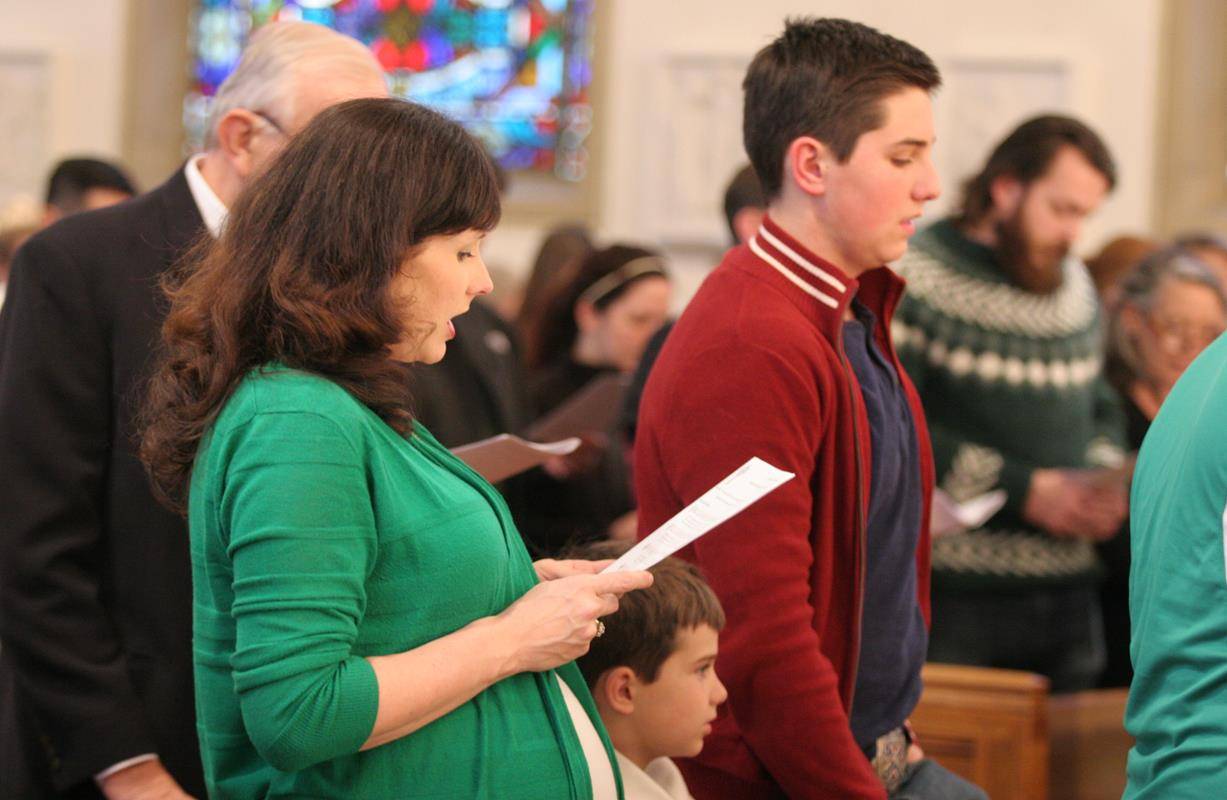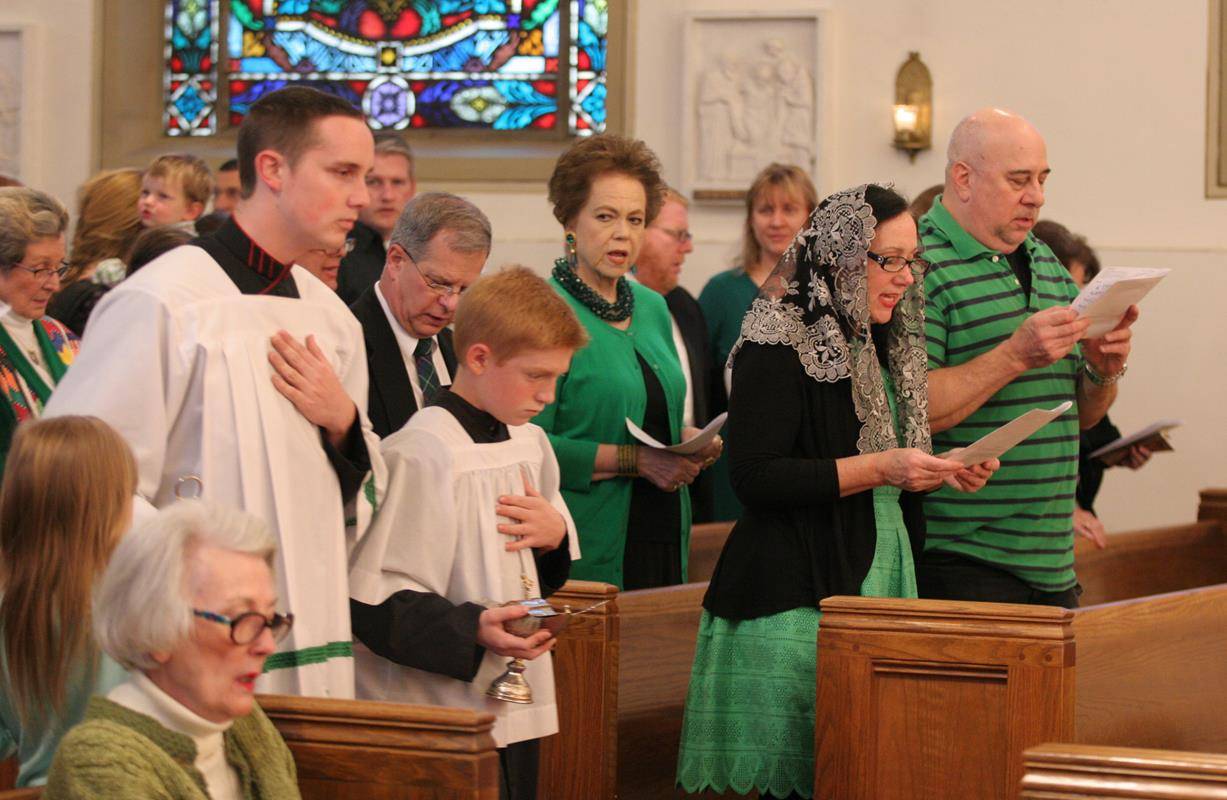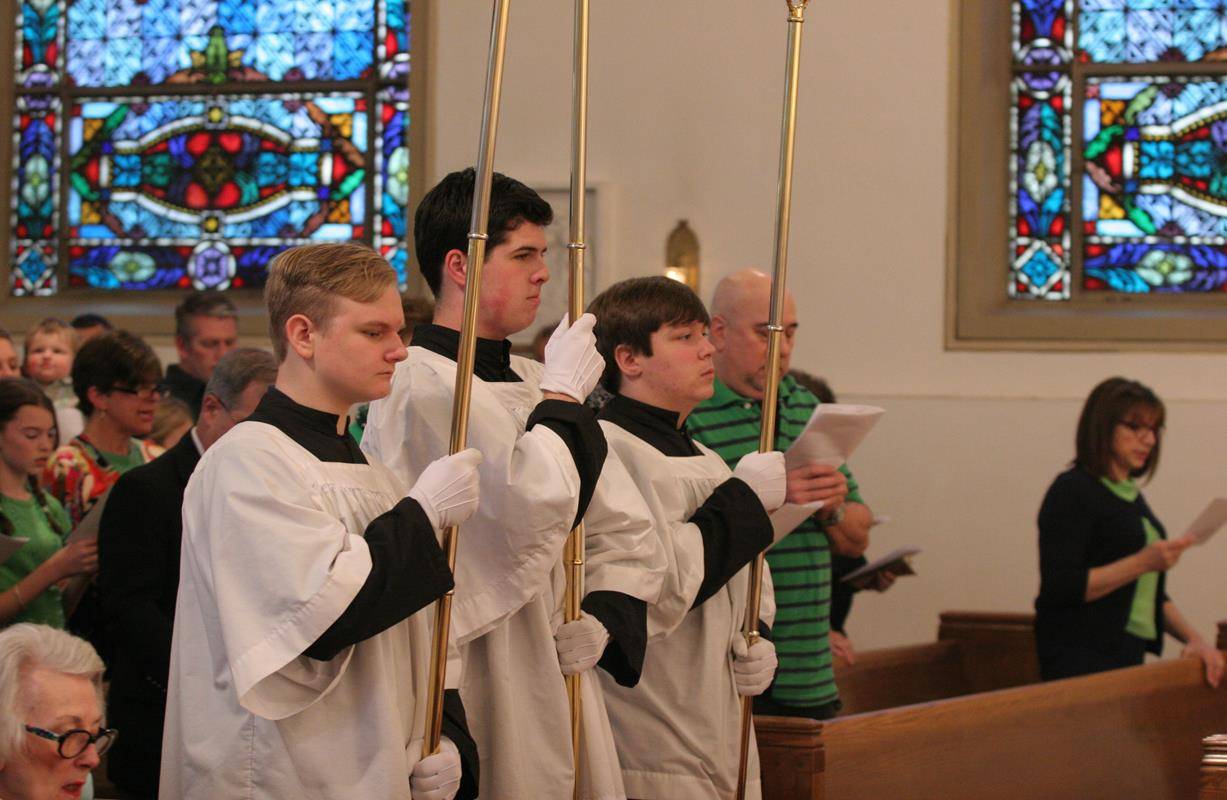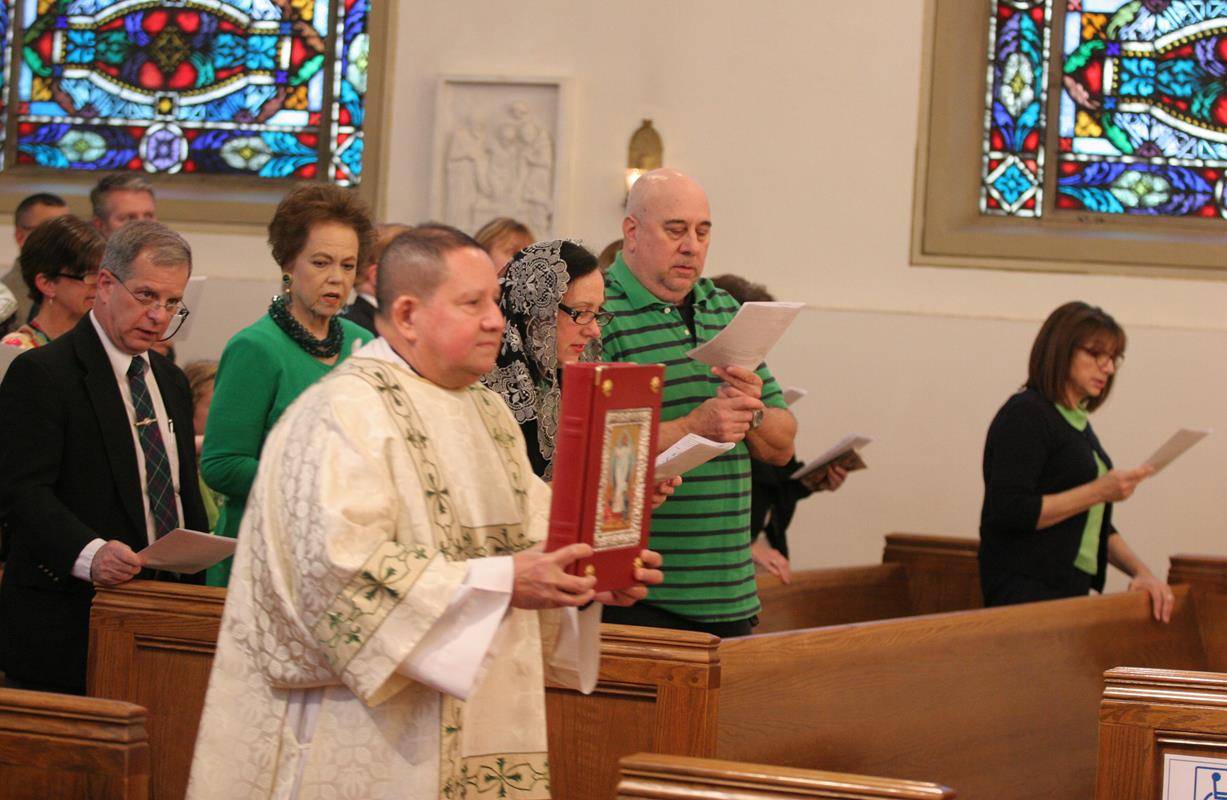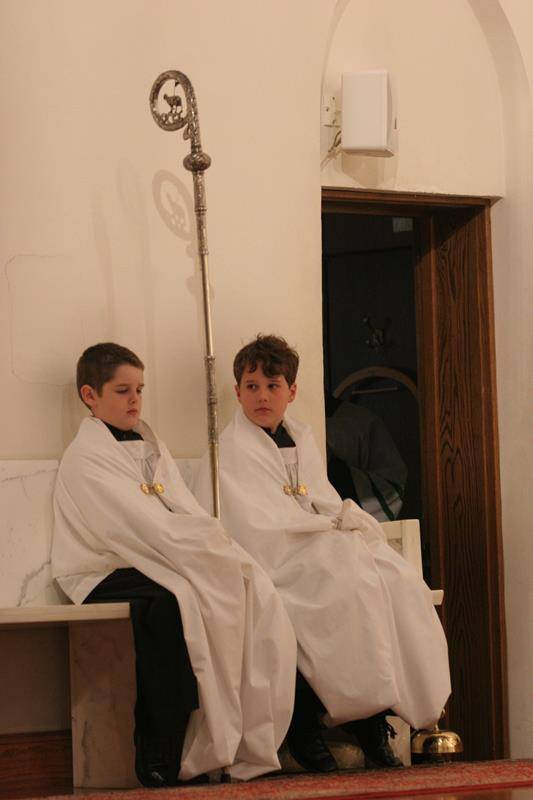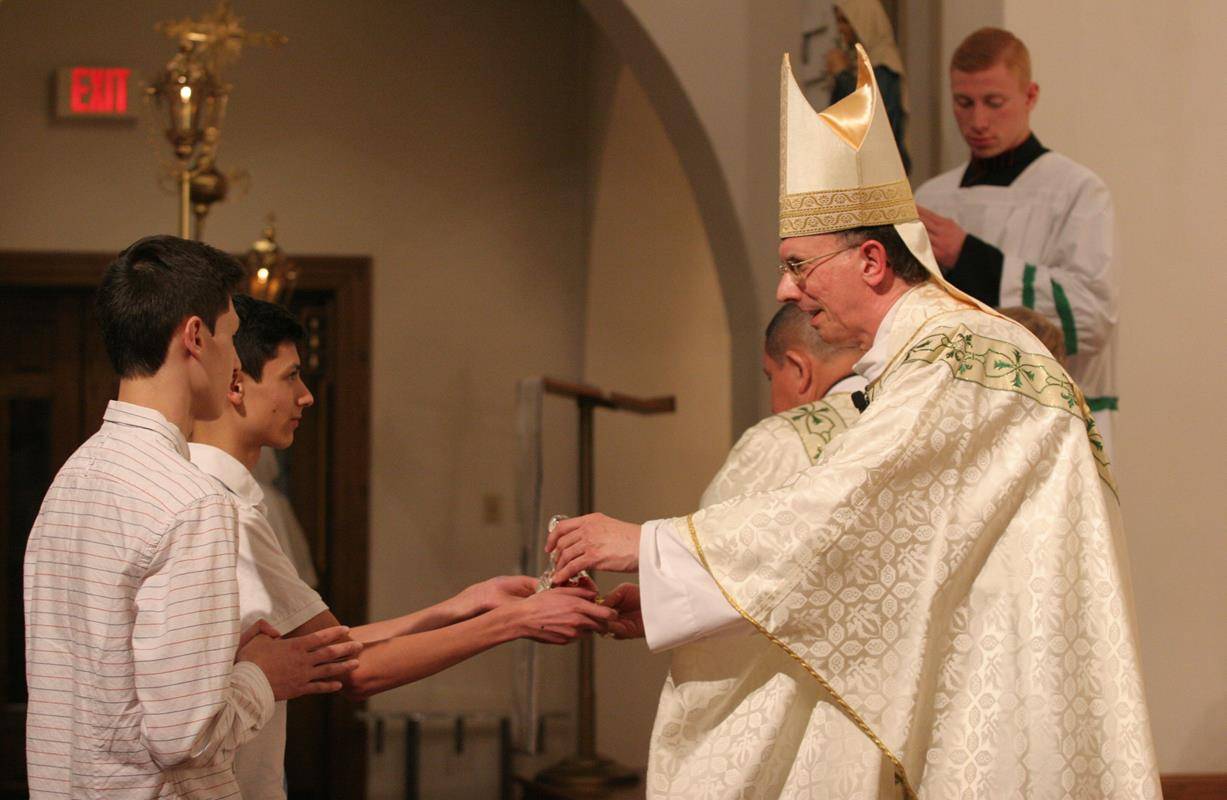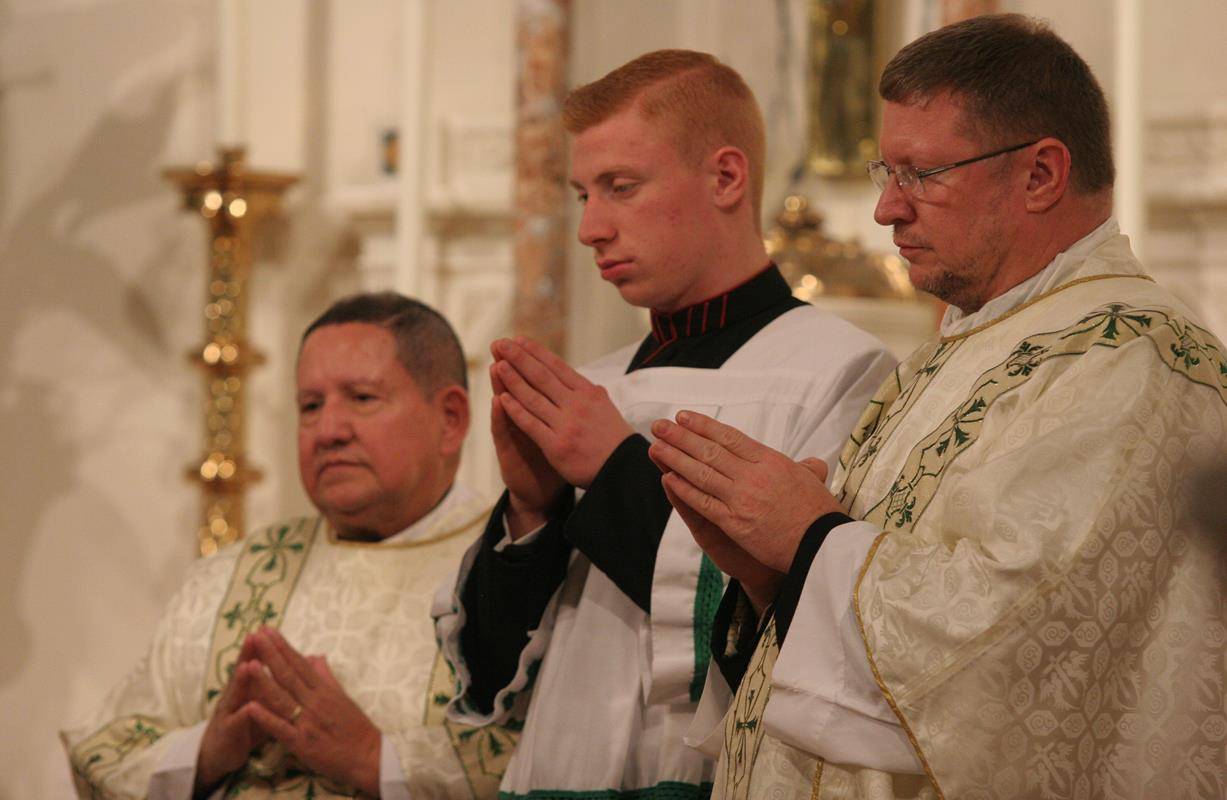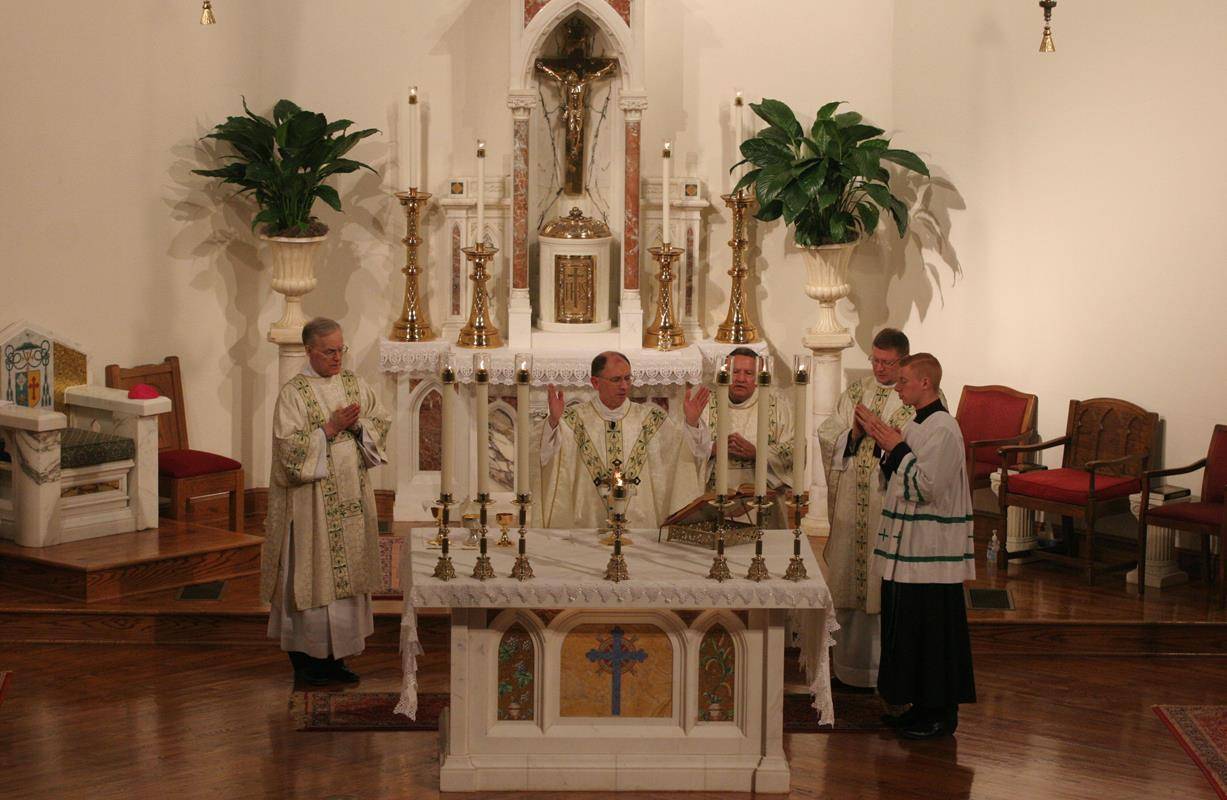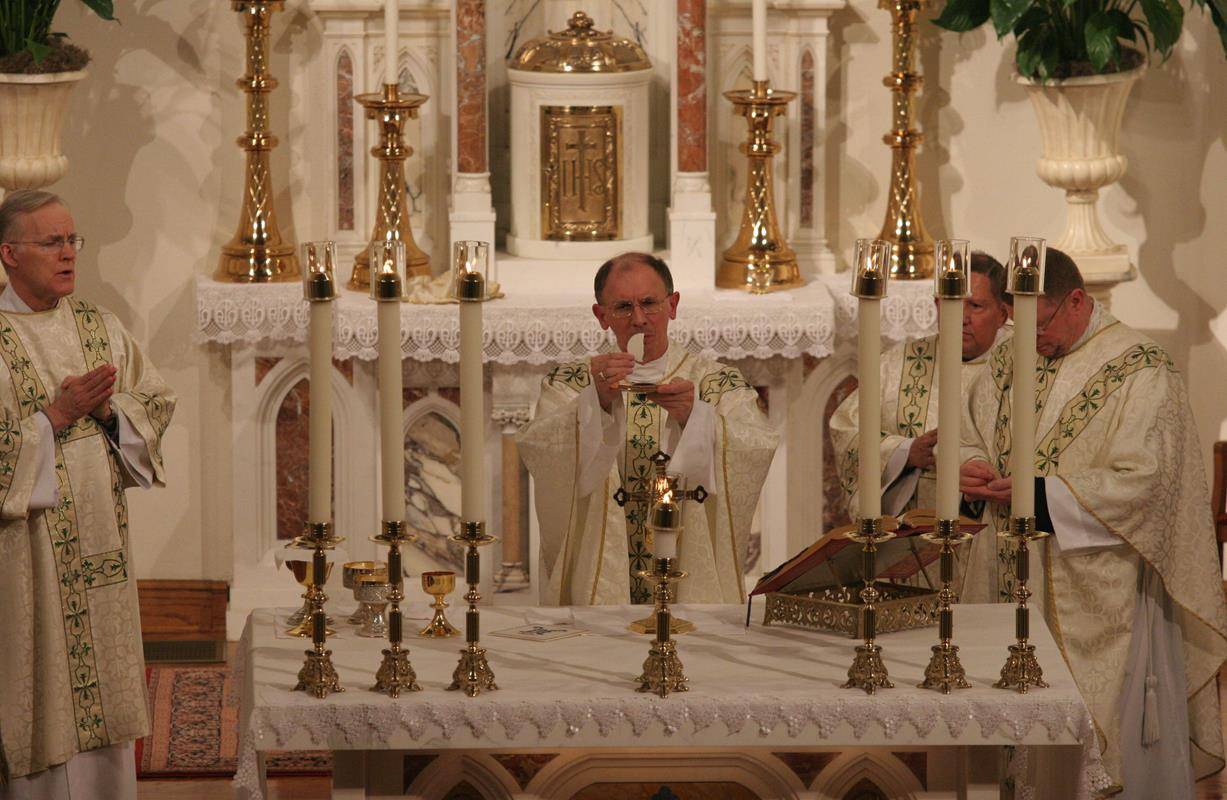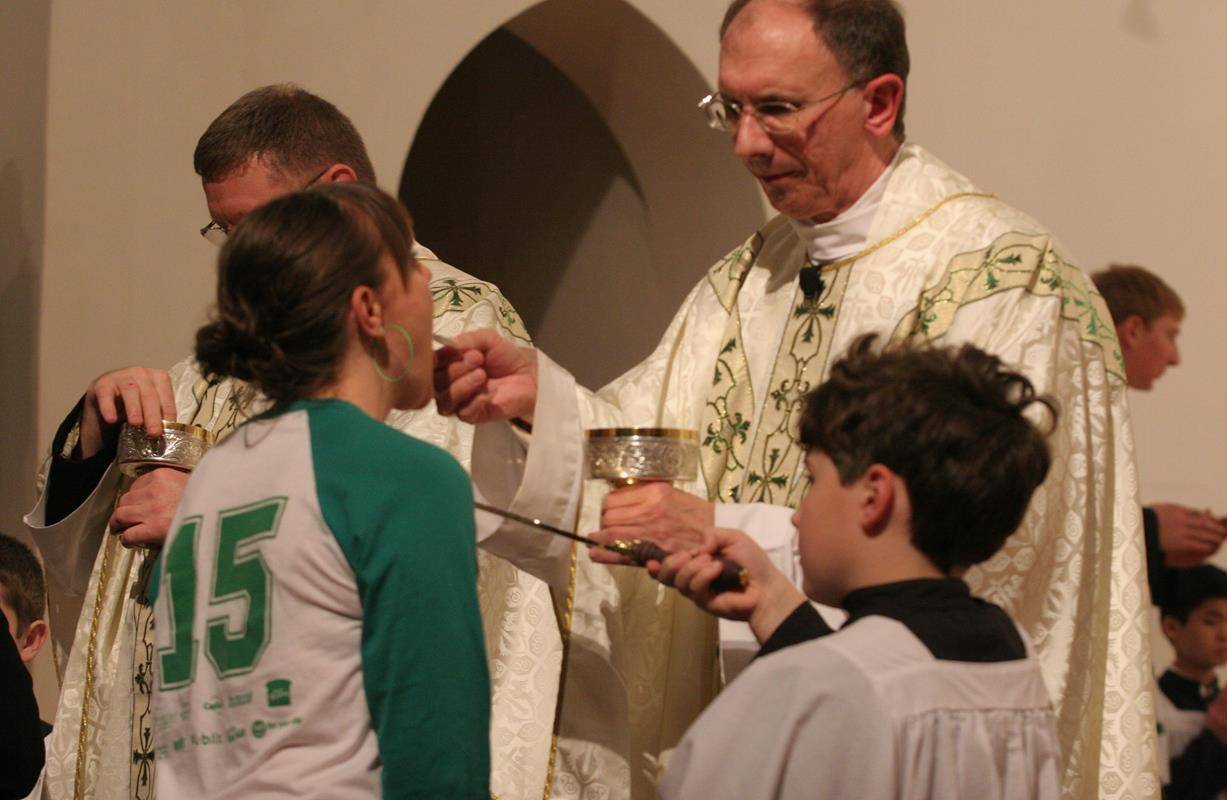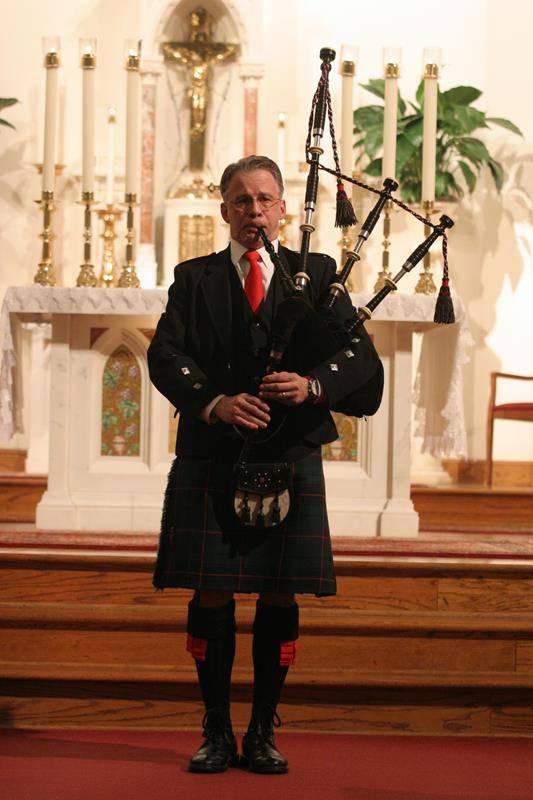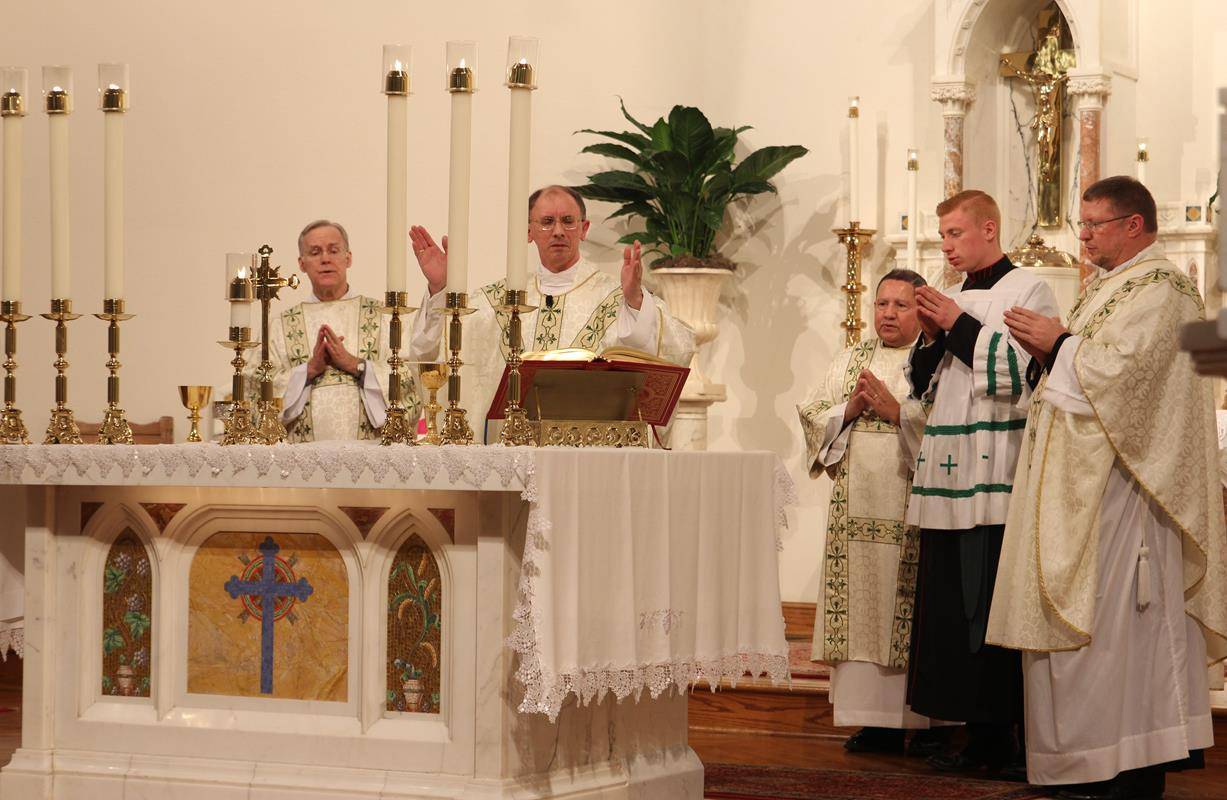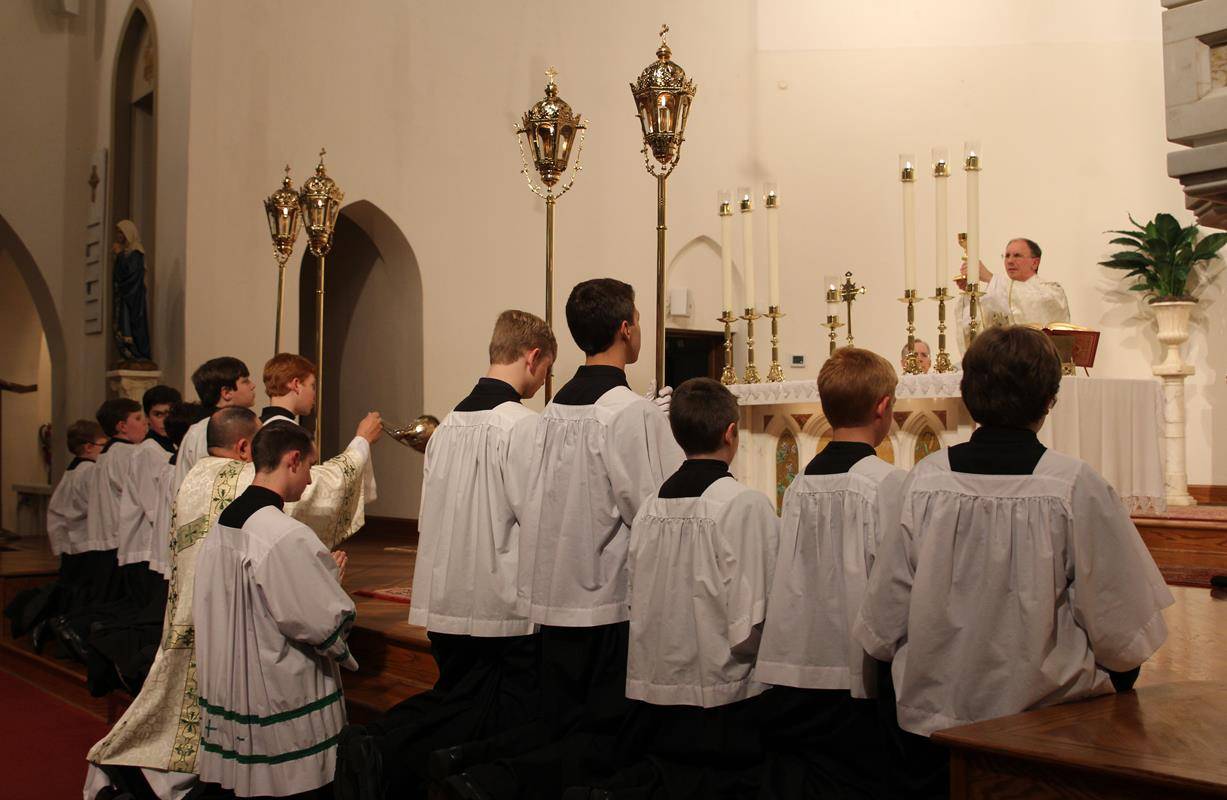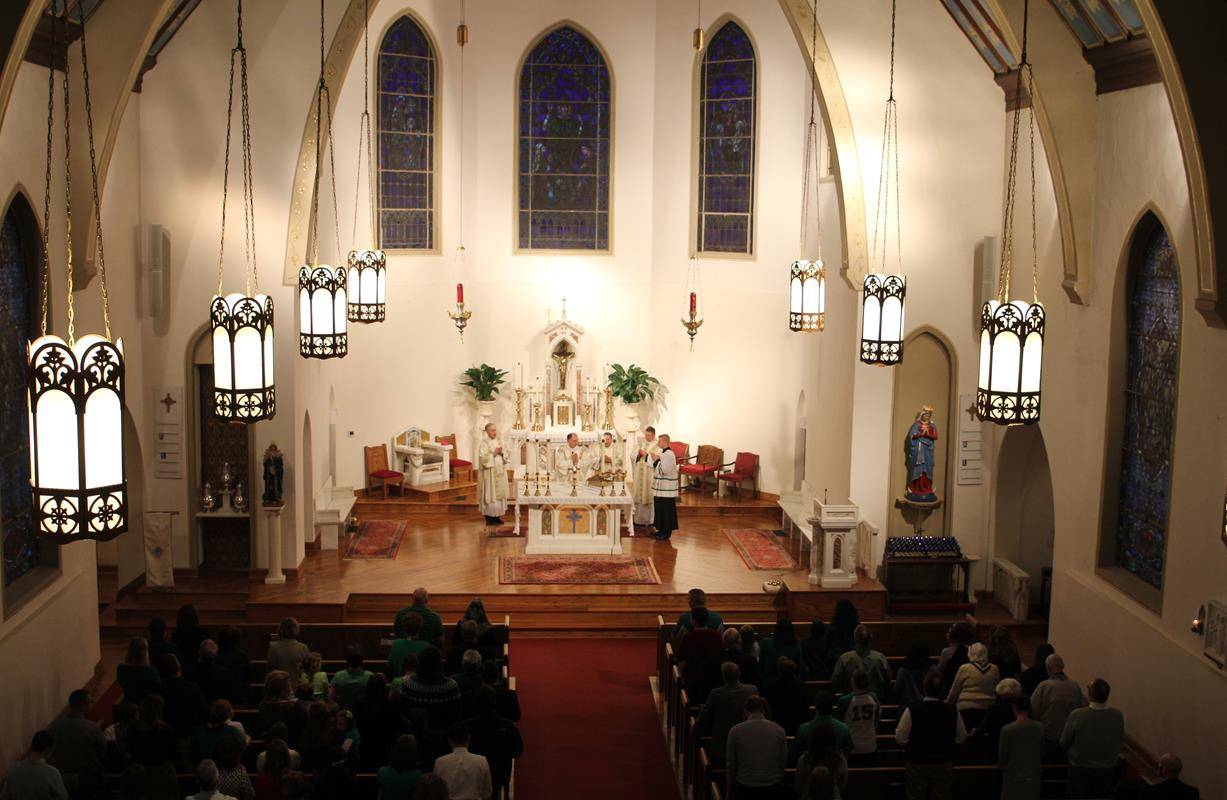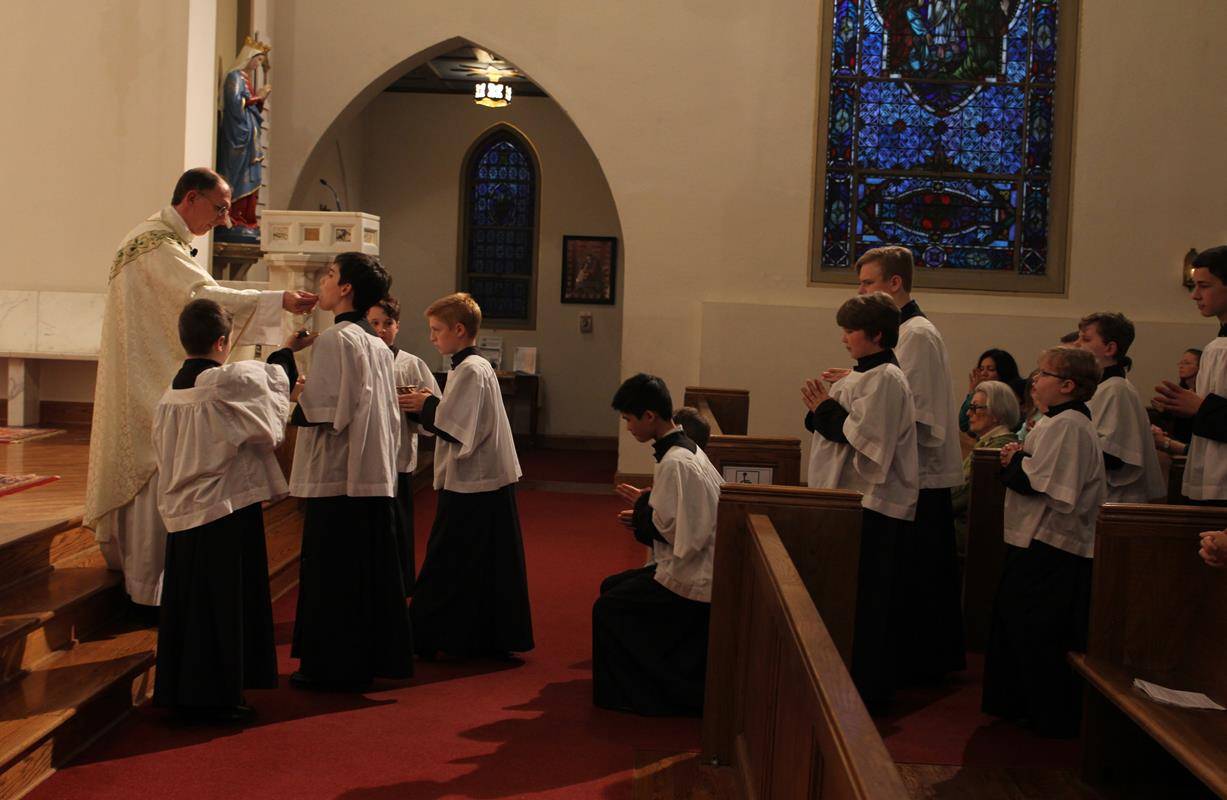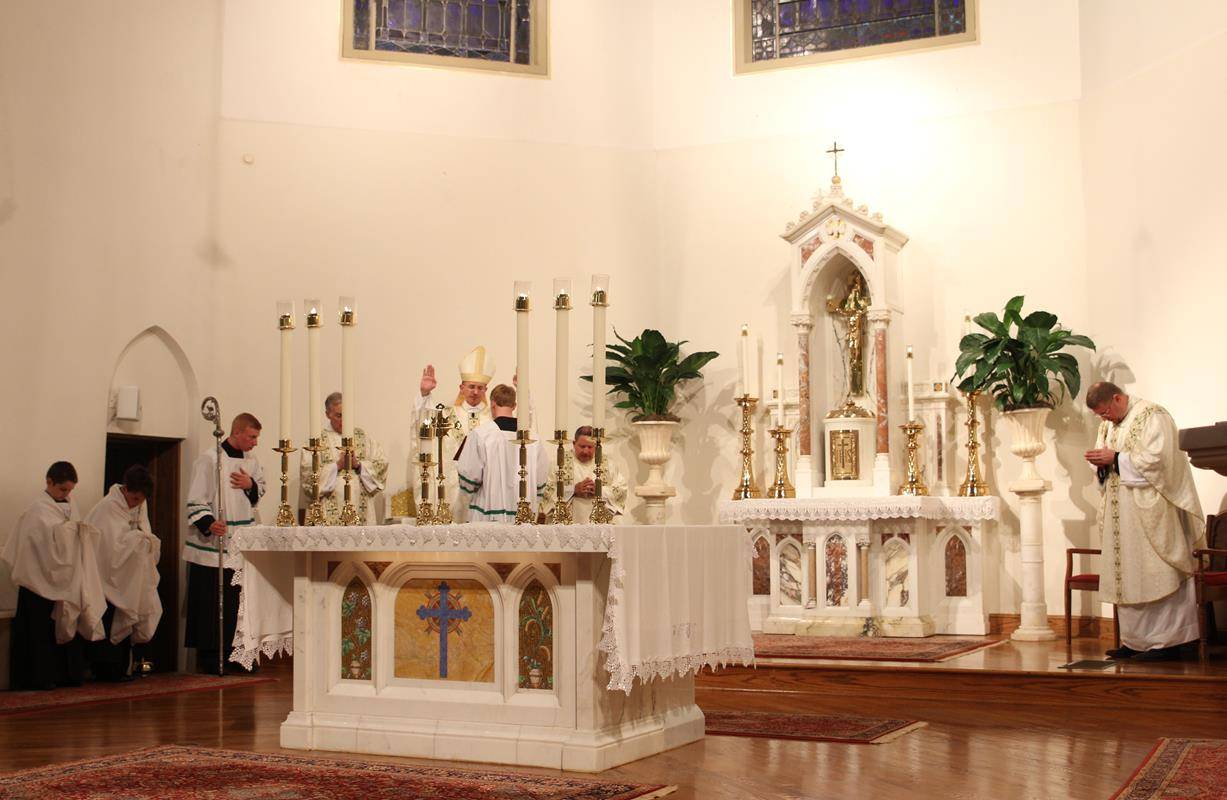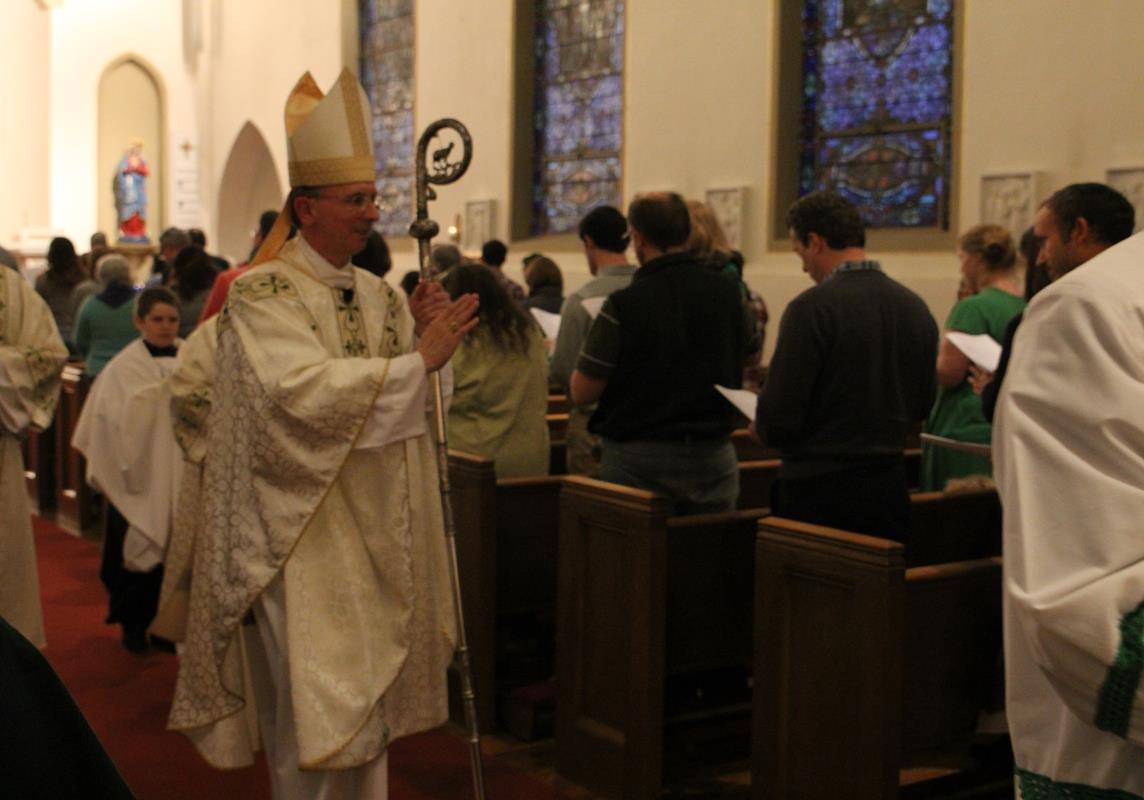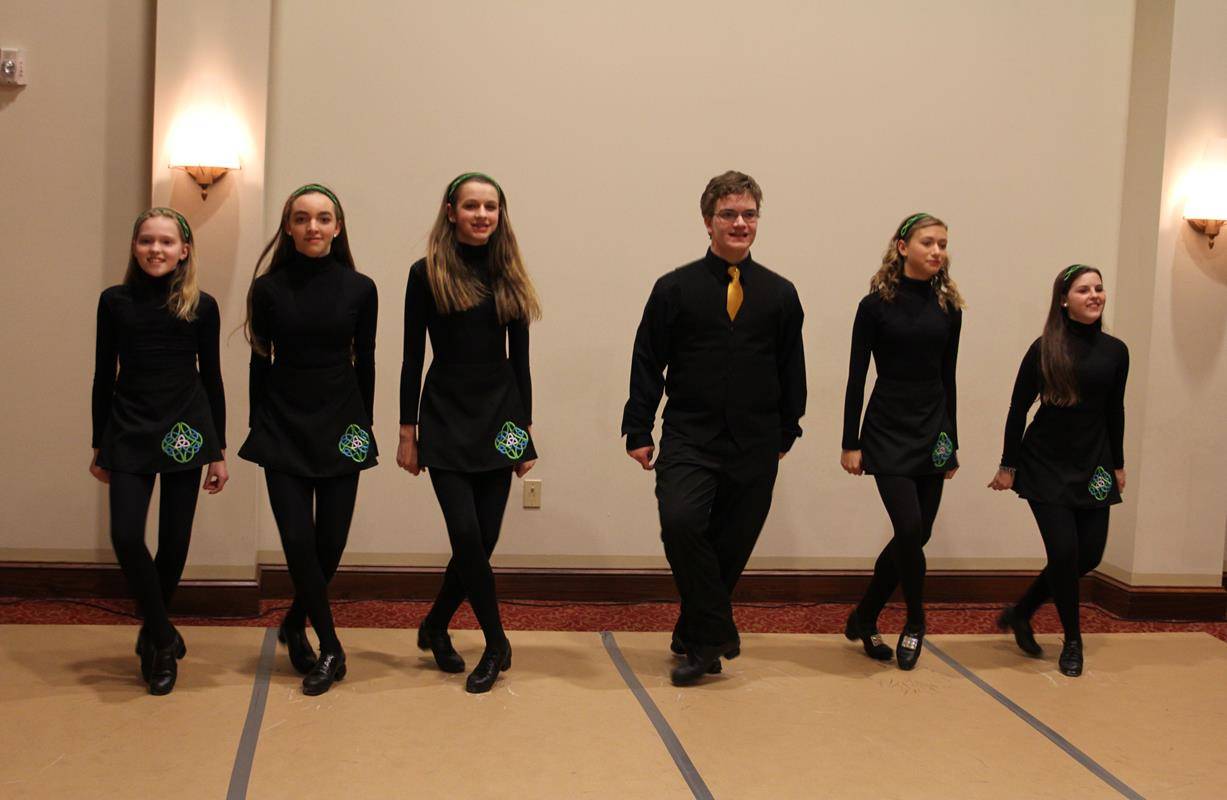CHARLOTTE — A second collection taken up at all parishes in the Diocese of Charlotte on Easter weekend, April 15-16, will help meet the needs of the diocese’s Seminary and Priests’ Continuing Education Programs.
The diocese has 24 men studying for the priesthood in two major seminaries and one minor seminary: the Pontifical North American College in Rome and the Pontifical College Josephinum in Columbus, Ohio, and St. Joseph College Seminary in Charlotte. It costs approximately $33,000 each year to fund a major seminary education.
The Seminarian Education Program is primarily funded through the Diocesan Support Appeal and also the second collection held on Easter Sunday.
Priests’ continuing education is a priority, as well. The diocese sponsors workshops and programs to help keep active priests informed of developments in theology and pastoral practices, enabling them to better serve the faithful.
“The education of our seminarians and the continuing education of our priests is an important priority in a growing, vibrant diocese such as ours,” Monsignor Mauricio West, vicar general and chancellor of the diocese, wrote in a letter to all parishioners about the upcoming collection. “It is through your generosity that we are able to meet the escalating cost of education today. Please be assured of our gratitude for your generous response to the Seminary and Priests’ Continuing Education Collection to be taken Easter weekend.”
— SueAnn Howell, senior reporter
More online
At www.charlottediocese.org/view/seminarians: Meet the men studying for the priesthood in the Diocese of Charlotte
— Photos by SueAnn Howell, Catholic News Herald
 CHARLOTTE — Ryan Kilmartin grew up at St. Matthew Church, receiving his sacraments there, attending Mecklenburg Area Catholic schools and graduating from Charlotte Catholic High School in 2009.
CHARLOTTE — Ryan Kilmartin grew up at St. Matthew Church, receiving his sacraments there, attending Mecklenburg Area Catholic schools and graduating from Charlotte Catholic High School in 2009.
He always loved basketball and played for Charlotte Catholic in high school. His passion for the sport took him to play first at Appalachian State University and then for Coach Cuonzo Martin at the University of Tennessee.
Throughout his youth, Kilmartin had many coaches who influenced him, mentored him and helped him achieve his goals. After college, Kilmartin came home to Charlotte and decided it was time to give back to the parish community that had helped raise him. The 26-year-old is now volunteering as the parish’s athletic director of his home parish, overseeing its Interfaith Basketball Program, which this fall sponsored 48 teams.
This spring St. Matthew Church will field 17-20 AAU teams, the most of all diocese members, and Kilmartin is coaching three of those teams himself. He says he wants to make a positive impact on young people – following the example of all the mentors he had in his youth.
“Monsignor (John McSweeney, St. Matthew Church’s pastor) tells our coaches that they will have an impact on these athletes, positive or negative, but they will have one,” Kilmartin says. “To me, the title ‘coach’ is the same as mentor, role model and in some cases, it could be father figure.
“Our coaches have the moral responsibility to be that figure of their life. So that is our hope, to be that positive extension for their individual and personal development.”
Recently Kilmartin saw a statement by Pope Francis that he says really struck home with him. The Holy Father spoke of great sporting events and how they create a culture of encounter, helping participants to go beyond their own self-interest.
“I agree wholeheartedly,” he says. “Sports help us go beyond self. In coaching, I try to be influential. I try to help players understand that during a basketball game they can make unselfish decisions.”
He believes that the ability to pray before games when it is appropriate and players shaking hands at the end of the game are signs of faith and sportsmanship that are important to youth sports at St. Matthew Church.
Kilmartin says he is proud of what he and the staff and volunteers at the parish have been able to do with youth sports.
“It’s truly a team effort,” he explains. “We’re trying to start more things at the parish like a running club, a dodgeball league for people aged 16-plus, and a volleyball league as well. We have a lot of ideas.
“We even have some great summer camps coming up! Basketball camp where CCHS basketball players will be able to help coach the athletes, and a Summer Fun camp where we will play a lot of sports, games, watch awesome movies and have a lot of fun!”
Kilmartin enjoys being part of one of the largest Catholic churches in the U.S. and the largest contributor of teams to the basketball leagues in Charlotte.
“It’s worth it,” Kilmartin says. “I get to hopefully positively influence 500 kids a year. I want to help instill work ethic, character and determination for these athletes – to help them develop with their faith, life and then athletics.
“Hopefully, they will use the life lessons taught in our programs to help not just their lives but other lives as they get older and start making their impact on the next generation.”
— Sueann Howell, Senior reporter
 ‘It’s an incredible joy to see the Holy Spirit at work’
‘It’s an incredible joy to see the Holy Spirit at work’
CHARLOTTE — Authentic friendships rooted in Jesus Christ and sharing the beauty of the Catholic faith are at the heart of the mission of the Chang family, FOCUS missionaries serving at St. John Neumann Church.
The Changs – Jimmy, Melissa and their young daughter Amaria – are a part of a pilot program for the Fellowship of Catholic University Students, a lay Catholic movement with the mission to know Jesus Christ and fulfill His Great Commission, “Go, therefore, and make disciples of all nations” (Mt 28:19).
FOCUS missionaries are trained in Church teaching, prayer, Scripture, evangelization and discipleship. They strive to encounter people in friendship where they are, inviting them into a personal relationship with Jesus Christ and accompanying them as they pursue lives of virtue and excellence. Through Bible studies, outreach events and one-on-one discipleship, missionaries inspire and build up people in the faith, helping them go out to spread the good news and to live out the Great Commission in their lives.
This pilot program places experienced FOCUS missionaries who are college graduates from every walk of life – fresh off campus or retired, single or married with children – into parishes in the U.S. Four parishes are in the pilot program: St. John Neumann, Christ the King Church in Tulsa, Okla.; St. James Parish in Arlington Heights, Ill.; and Our Lady of Lourdes Church in Denver, Colo.
“The FOCUS Parish Outreach pilot began in order to take what FOCUS has learned from campus about evangelization and discipleship-making and apply it to the parish,” says Andrea Francois, FOCUS director of parish outreach. “Our hope is that our parish missionaries will make disciples in the parish and teach them how to share their faith through evangelization.”
Melissa first encountered FOCUS at the University of Nebraska in Lincoln. She had recently graduated from college and moved to Lincoln for a work opportunity. Melissa was impressed by the FOCUS missionaries’ zeal for the faith. She attended a FOCUS Bible study and a national conference.

 “I became intrigued by the FOCUS missionaries as I grew in friendship with many of them,” she recalls. At the national conference she saw many young adults “on fire for the faith and so many of them opened my heart to the Lord’s greater call to share that with other people.”
“I became intrigued by the FOCUS missionaries as I grew in friendship with many of them,” she recalls. At the national conference she saw many young adults “on fire for the faith and so many of them opened my heart to the Lord’s greater call to share that with other people.”
She took a leap of faith, leaving her full-time job of three years, and has served as a FOCUS missionary since 2009.
She and Jimmy arrived at St. John Neumann Church last August. The past seven months have been a blessing, she says.
“We are growing in authentic friendship with people here, helping them to have a deep, personal encounter with Our Lord. We’re really walking with them and equipping them to reach out to others, to share their faith in a real way,” she says.
They are now running six Bible studies at the parish, several during times when parents drop off their children for faith formation classes, so that the parents can also grow in their faith.
“Sometimes this is the first time that people are opening God’s Word. It’s been amazing to see the Holy Spirit at work as we build friendships through living the Gospel,” she says.
Jimmy, a native of Ecuador, is bilingual, which has been very helpful to the St. John Neumann Church community. He was educated in a school run by Salesians and in high school he started working in a mission caring for poor children.
“I was involved in door-to-door evangelization in impoverished areas where we would visit and pray for the sick and the poor. Prayer groups were very familiar to me in Ecuador. I remember joining my first prayer group when I was around 12 years old,” he recalls.
He met Melissa in Miami, where he was introduced to FOCUS while they were dating. “FOCUS’s method and model of evangelization caught my attention. I believe that this method of incarnational evangelization is what Jesus chose to reach the whole world,” he says.
He began considering serving as a missionary with FOCUS three years ago when he was speaking at a Catholic retreat in Miami. He recalls feeling that God was calling him to something more.
“It was a true moment of conversion to mission for me. As I continued to learn more about FOCUS through my wife’s involvement as a missionary, we heard about a new initiative to bring the FOCUS evangelization model to parishes. It seemed to us an answer to our prayers. We had desired to serve together as family.”
Jimmy shares that some of the things he enjoys most about serving the parish community is serving alongside his family and getting to know other families.
“So much of what we do is about diving deeper with parishioners as we build authentic friendships. It’s an incredible joy to see the Holy Spirit at work as we pray with others, as we study Scripture together, as we share life together.
“We are preparing them to head into lifelong mission by raising up servant leaders, disciples of Jesus, who will be equipped for a lifetime of reaching others and teaching them to do the same.”
He stresses the need to always be aware that it is Jesus who is making the impact. “We are just like a brother or sister who knows Christ, and are sharing with our brothers and sisters in the parish what we have experienced in and through life with Christ.
“This is the work of the Holy Spirit. The Holy Spirit is doing the heavy lifting.”
Father Pat Hoare, pastor, is glad to have the Chang family serving the parish. He learned of the pilot program a couple of years ago.
“After a few conversations, FOCUS visited St. John Neumann Church and met with our parish council and finance council. After lots of discussion, prayer and discernment, we decided to accept FOCUS’s invitation to serve as a pilot parish,” he said. “We’re early in the process, but I see seeds being planted that I eagerly hope will begin to bear great fruit!”
— SueAnn Howell, senior Reporter
 MOUNT HOLLY — On March 17, Catholics of Irish descent in the Diocese of Charlotte gathered to celebrate their Irish roots with a special Mass at Old St. Joseph Church in Mount Holly, one of North Carolina’s oldest Catholic churches.
MOUNT HOLLY — On March 17, Catholics of Irish descent in the Diocese of Charlotte gathered to celebrate their Irish roots with a special Mass at Old St. Joseph Church in Mount Holly, one of North Carolina’s oldest Catholic churches.
Sponsored by the Ancient Order of Hibernians and the Ladies Ancient Order of Hibernians in the Charlotte area, the annual Mass paid tribute to the historic church’s first pastor, Father T.J. Cronin, who was Irish born and is buried in the adjacent church cemetery. Father Paul McNulty, chaplain of the St. Brendan division of the Hibernians, offered the Mass. St. Joseph Church was built in 1843 for and by Irish immigrants, who had come to mine for gold along the Catawba River.
It is the oldest Catholic church still standing in the state and is an official state and U.S. historical site. Today St. Joseph Church is used for special occasions such at the feasts of St. Patrick and St. Joseph in March, and tours are available upon request through Queen of the Apostles Church in Belmont.
— Photos by Tara Heilingoetter | Catholic News Herald



